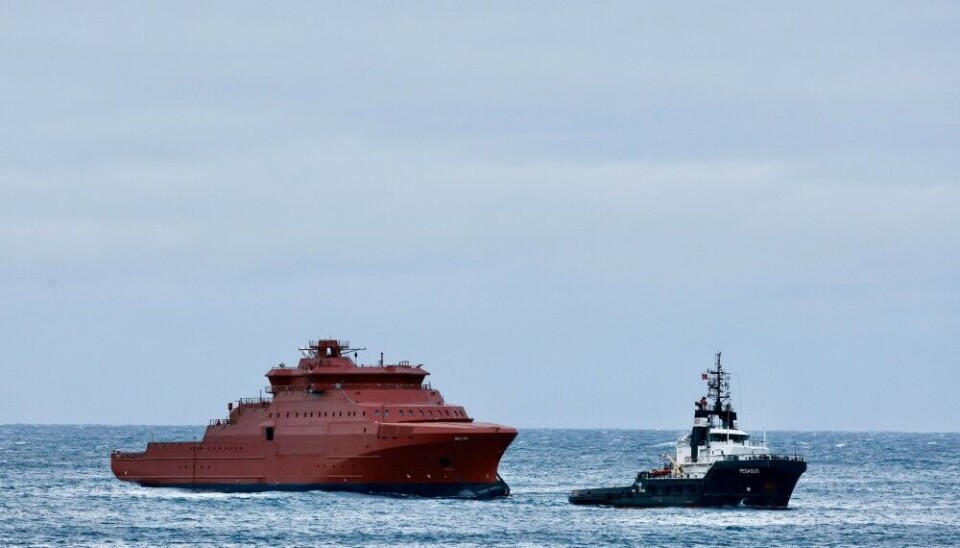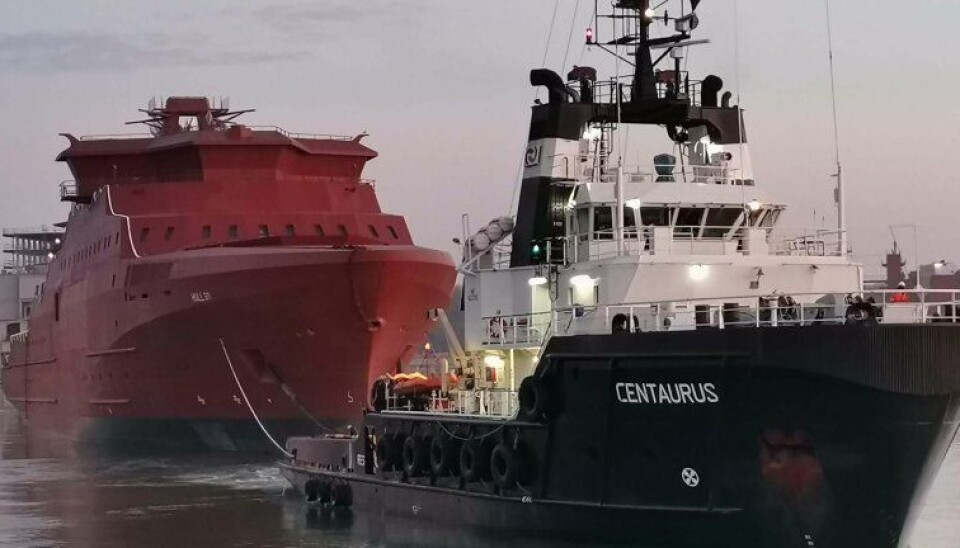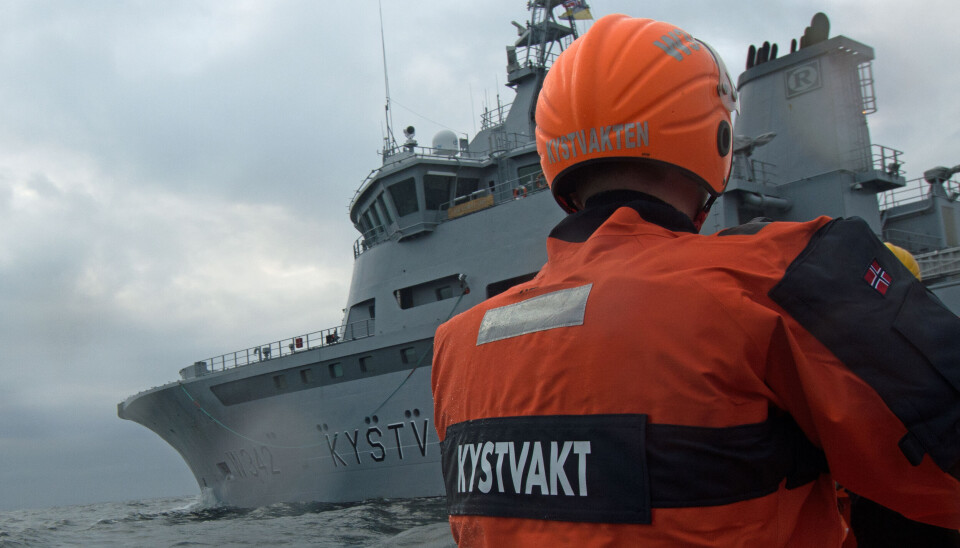
Third new Norwegian Coast Guard vessel arrives
Norway’s waters to patrol have expanded dramatically in recent years as previous ice-covered areas around Svalbard now are easier to navigate for fisheries, cruise tourism, cargo vessels and foreign warships.
KV Hopen, the third of three new ice-strengthened coast guard vessels, arrived at the yard on Norway’s west coast on Friday, the country’s DefenCe Material Agency informs. Built for long-distance operations, the new class of vessels will sail Arctic waters of the Greenland Sea, Norwegian Sea and Barents Sea to the north of Svalbard.
The new ships, three in total, arrived timely.
Ice charts for late January show the dramatic impacts of climate change. Areas that previously had fast ice, or very close drift ice, making it impossible to sail for commercial fisheries or other vessels, are now open water.
North of Svalbard, open waters is seen to 81° N, the charts provided by the Norwegian Meteorological Institute show.
Vanishing sea ice gives more water to patrol. The Coast Guard needs to sail in larger areas of previously partly unmapped seas.
Norway has nearly 2 million square kilometers of water or seven times larger than its mainland.
The three new ships are named after islands in the Norwegian Arctic: KV Jan Mayen, KV Bjørnøya and KV Hopen.
Like Norway’s largest Coast Guard vessel today, the KV Svalbard, also the new Jan Mayen class will house a hangar and a deck for helicopters. The ships can accommodate up to 100 people.

Armed with a main gun, machine guns, and a sonar for anti-submarine warfare the ships can play an active role in case of war situations in the north. There is storage support for torpedoes and mines onboard.
The Coast Guard is part of the Norwegian Navy and Armed Forces.
Project Manager Odd Magne Nilsen with the Defense Materiel Agency welcomes the new vessel.
“An intensive period of quipping, testing and completion awaits before the vessel can be put into operation,” he says.
Nilsen notes that the new coast guard vessels will become a “very important resource” with capacities and ability to operate in the entire area of Norway’s interest including Arctic waters.















